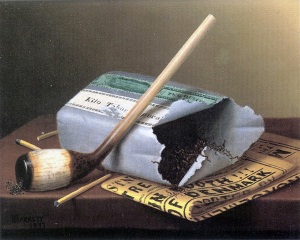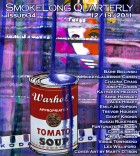How did this story idea come to you? Did the story stem from research, or the other way around?
Although I’m something of a research junkie, I didn’t do very much of it for “Zong.” Slavery is a topic that I’ve grown up with as someone who has always been interested in history and as someone who lives fairly close to Liverpool, a city which was to a large extent built on slave wealth, and is now home to the International Slavery Museum. I was introduced to the events which took place on the slave-ship Zong while studying a module in historical fiction in my final year as an undergraduate student.
I did research the case of the Zong itself and learnt facts that didn’t make it into my story, but which gave me more reasons to be pissed; and that anger is, in the end, the reason “Zong” exists in the form it does. Facts such as: None of the crew were charged with murder; John Lee, the Solicitor General for England and Wales at the time, went on record stating that the case of the Zong was the same as if wood had been thrown overboard. That kind of thing.
Tell us about the damp hair covering everything.
To a degree, it’s open to interpretation. My intention was to create a pseudo-supernatural manifestation of guilt, a sort of paranoid delusion in the crew based on this repressed self-horror, which rather than being addressed constructively is turned outwards, and reacted to with further violence. This to me has a wider socio-historical meaning than it does to just those events aboard the Zong.
The supernatural and the hallucinatory can be very pretty. I knew early on that I didn’t want that. I wanted the imagery of Zong to reflect my sense of disgust; and there aren’t many things as disgusting as damp hair, when it’s not attached to a living being. Additionally, I didn’t want to refer to a typical, personified haunting because African slaves were not historically seen as people; they were othered by a set of features, such as hair texture, which enabled them to be dehumanised and disposed of like cattle (or even wood). So, rather than imagining themselves to be haunted by human ghosts, the crew are haunted by this single, disembodied feature.
There are no clear-cut characters here, obviously a purposeful choice. What happens if you add people, names, and dialogue to a story like this?
That’s a good question. I’ll be completely honest, it’s not something I had noticed, or even considered for this piece! A common feature of my flash fiction is that I simply forget to insert the basic vehicles of narrative; characters, dialogue, etc. I tend to see the micro word count offered by flash as a great opportunity to focus on image, symbolism and meaning; a chance to really play with words without worrying too much about the mechanics.
In this case, I suppose it would be possible to create a longer story with dialogue and a more fleshed-out, individual perspective; but I think it would become less about the wider themes and more about those individual characters we met. The crew as a collective is a fairly simple device; get too close to one of them and it gets a lot more complicated.
Tell us about your novel-in-progress.
I’m actually supremely superstitious about discussing works-in-progress! I have this funny belief, seemingly inherited from my mother (who is an artist), that if I verbalise too much of an idea before I get it down, it will fly out of the window of my mouth and I’ll never see it again. I will tell you that it’s a little bit up in the air at the moment due to my other commitments — I’m trying to keep my mother and myself financially afloat while studying toward my MA. It’s an alternate history in which the point of change is born of science-fictional meddling; combining my two favourite genres to write in.
What got you interested in history, particularly post-colonial narratives?
I’ve been fascinated by history for as long as I can remember — I spent most of my childhood with my rather prominent nose buried in history books both non-fiction and fictional, visiting all those wonderful historical hotspots I’m surrounded by, watching Time Team (a really great British show about archeology) and so on. I was a real nerd; still am. As I got older and got involved with racial discourse, it became clear to me how much of the history I’d been taught was authored from a very eurocentric perspective, and from there came my interest in colonial history, history from below, and, as a logical extension of that, post-colonial fiction.



 The core workshop of SmokeLong Fitness is all in writing, so you can take part from anywhere at anytime. We are excited about creating a supportive, consistent and structured environment for flash writers to work on their craft in a community. We are thrilled and proud to say that our workshop participants have won, placed, or been listed in every major flash competition. Community works.
The core workshop of SmokeLong Fitness is all in writing, so you can take part from anywhere at anytime. We are excited about creating a supportive, consistent and structured environment for flash writers to work on their craft in a community. We are thrilled and proud to say that our workshop participants have won, placed, or been listed in every major flash competition. Community works.